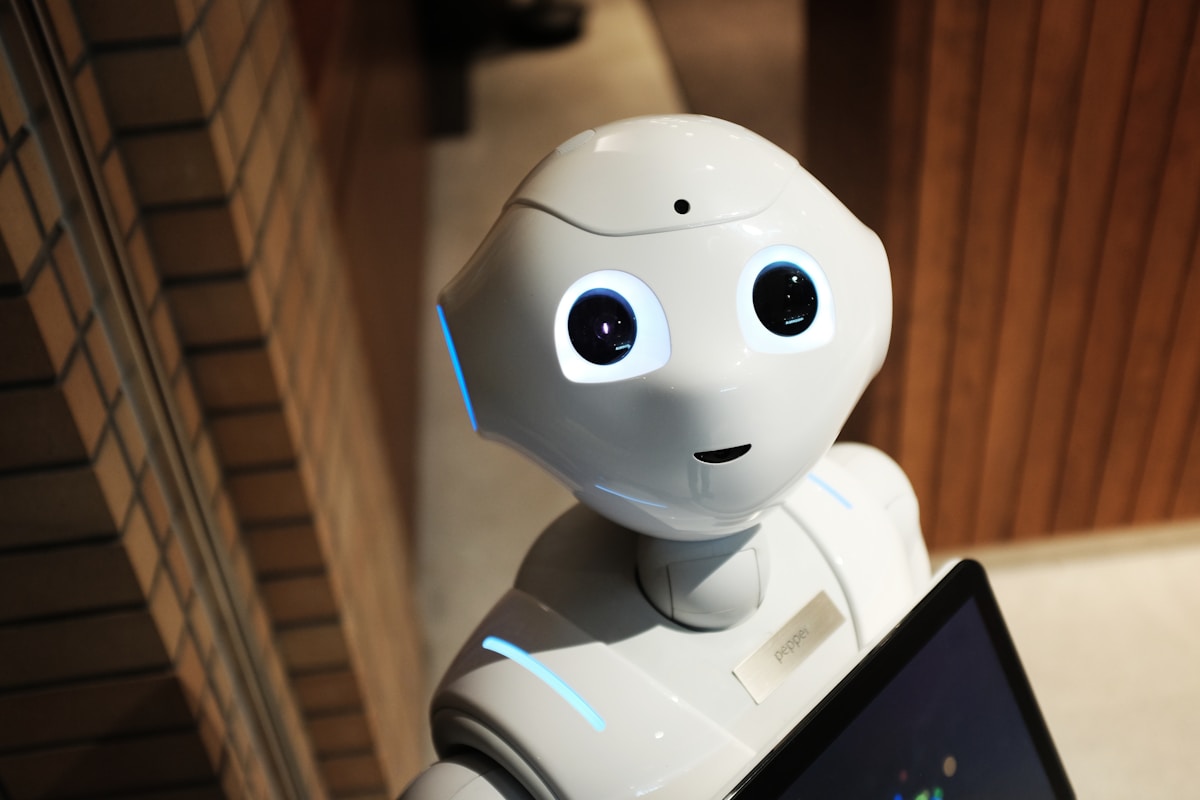Claude Sonnet 4.5: The World's Best Coding AI Model Revolutionizes Software Development
Anthropic launches Claude Sonnet 4.5 on September 29, 2025, setting new standards in AI coding, computer use, and agentic capabilities with unprecedented performance and alignment.

Claude Sonnet 4.5: The World's Best Coding AI Model Revolutionizes Software Development
On September 29, 2025, Anthropic unveiled Claude Sonnet 4.5, marking a transformative moment in artificial intelligence history. This groundbreaking model doesn't just incrementally improve upon its predecessors—it fundamentally redefines what AI can achieve in software development, autonomous task completion, and computer interaction. With state-of-the-art performance on industry-leading benchmarks and revolutionary new capabilities, Claude Sonnet 4.5 represents the cutting edge of AI technology entering what Anthropic calls the "agentic era."
Unprecedented Coding Excellence
Claude Sonnet 4.5 has achieved what many thought impossible: becoming the undisputed leader in AI-powered software development. On the SWE-bench Verified evaluation—a rigorous assessment of real-world software engineering capabilities—Claude Sonnet 4.5 scored an impressive 77.2%, with high-compute configurations reaching 82.0%. This benchmark tests AI models on authentic GitHub issues, requiring them to understand codebases, identify bugs, implement fixes, and ensure solutions don't break existing functionality.
What makes this achievement even more remarkable is Claude Sonnet 4.5's ability to maintain focus and coherence across extraordinarily complex, multi-step tasks. Early testing demonstrates the model can work autonomously for more than 30 hours on intricate software engineering projects, never losing track of context or objectives. This sustained attention span transforms what's possible with AI-assisted development, enabling projects that would have required weeks of human effort to be completed in dramatically compressed timeframes.

Computer Use Reaches New Heights
One of Claude Sonnet 4.5's most impressive capabilities is its mastery of computer use—the ability to interact with software applications just as humans do. On OSWorld, a benchmark measuring AI performance on real-world computer tasks, Claude Sonnet 4.5 achieved a remarkable 61.4% success rate. This represents a quantum leap from Claude Sonnet 4's already impressive 42.2% just four months earlier.
This capability powers the new Claude for Chrome extension, which brings AI assistance directly into web browsers. Users can watch Claude navigate websites, fill spreadsheets, complete forms, and execute complex multi-step workflows entirely within their browser environment. The implications for productivity are staggering—tasks that once required manual clicking through dozens of pages can now be automated while maintaining human oversight and control.
The computer use capability extends beyond simple automation. Claude Sonnet 4.5 understands context, can make intelligent decisions based on what it sees on screen, and adapts its approach when encountering unexpected situations. This flexibility makes it suitable for handling the messy, unpredictable nature of real-world computer tasks that rule-based automation systems struggle with.
Enhanced Intelligence Across Domains
While coding and computer use represent Claude Sonnet 4.5's headline achievements, the model demonstrates substantial improvements across virtually every dimension of AI capability. In mathematics and reasoning tasks, it shows marked advances over previous generations. Expert evaluators in finance, law, medicine, and STEM fields consistently report that Claude Sonnet 4.5 exhibits dramatically superior domain-specific knowledge and analytical reasoning compared to earlier models, including the previous flagship Opus 4.1.
This broad-based intelligence makes Claude Sonnet 4.5 genuinely versatile. Financial institutions use it for complex risk analysis and structured product evaluation. Legal teams deploy it to analyze entire briefing cycles and draft judicial opinions. Healthcare organizations leverage it for medical research and clinical decision support. The model's ability to understand nuanced professional contexts and apply specialized knowledge appropriately sets a new standard for AI assistants across industries.

The Claude Agent SDK: Building the Future
Perhaps the most significant long-term impact of Claude Sonnet 4.5's release is the accompanying Claude Agent SDK. This development kit provides the same infrastructure Anthropic uses internally to build Claude Code—their flagship agent-based development tool. By open-sourcing these building blocks, Anthropic enables developers worldwide to create sophisticated AI agents capable of tackling complex, long-running tasks across any domain.
The SDK addresses fundamental challenges in agent development: memory management across extended sessions, permission systems balancing autonomy with user control, and coordination between multiple subagents working toward shared goals. These are problems Anthropic solved through months of intensive development on Claude Code, and now that hard-won expertise is available to everyone.
Early adopters are already reporting impressive results. Development teams at companies like Cursor, GitHub Copilot, and Cognition (creators of Devin) have integrated Claude Sonnet 4.5 and seen substantial improvements in code quality, task completion rates, and user satisfaction. The SDK's release promises to accelerate innovation across the AI agent ecosystem dramatically.
Industry Reception and Real-World Impact
The response from early customers and partners validates Claude Sonnet 4.5's transformative potential. Cursor reports seeing state-of-the-art coding performance with significant improvements on longer-horizon tasks. GitHub notes that Claude Sonnet 4.5 amplifies Copilot's core strengths, with substantial gains in multi-step reasoning and code comprehension enabling better handling of complex, codebase-spanning tasks.
In the security domain, Anthropic's Hai security agents experienced a 44% reduction in average vulnerability intake time while simultaneously improving accuracy by 25%. For litigation support, legal technology providers report the model delivers state-of-the-art performance on complex tasks like analyzing full briefing cycles and generating detailed summary judgment analyses.
The impact extends to creative tools as well. Canva, with over 240 million users, reports Claude Sonnet 4.5 delivers impressive gains on their most complex, long-context tasks. Figma has observed noticeably improved performance in their Make product, helping teams explore and validate ideas with more functional prototypes and smoother interactions while maintaining Figma's renowned design quality standards.
Safety and Alignment Leadership
Claude Sonnet 4.5 isn't just Anthropic's most capable model—it's also their most aligned and safe frontier model to date. The company's extensive safety training has yielded substantial improvements in reducing concerning behaviors like sycophancy, deception, power-seeking tendencies, and encouragement of delusional thinking. For agentic and computer use capabilities specifically, Anthropic has made considerable progress defending against prompt injection attacks, one of the most serious security risks for these systems.
The model's system card details comprehensive safety evaluations, including for the first time assessments using mechanistic interpretability techniques. These cutting-edge methods provide insights into the model's internal decision-making processes, enabling more robust safety guarantees. Claude Sonnet 4.5 operates under Anthropic's AI Safety Level 3 (ASL-3) protections, which match model capabilities with appropriate safeguards including classifiers designed to detect potentially dangerous inputs and outputs related to CBRN (chemical, biological, radiological, and nuclear) weapons.

Technical Excellence and Accessibility
Despite its dramatically enhanced capabilities, Claude Sonnet 4.5 maintains the same pricing structure as Claude Sonnet 4: $3 per million input tokens and $15 per million output tokens. This pricing stability makes cutting-edge AI capabilities accessible to a broad range of developers, startups, and enterprises. The model is available immediately through the Claude API using the claude-sonnet-4-5 model identifier, and through Claude Code for existing users.
The technical infrastructure supporting Claude Sonnet 4.5 reflects Anthropic's commitment to responsible scaling. The model was trained and runs on Google's sixth-generation Trillium TPUs, representing a full-stack approach to AI development that optimizes performance, efficiency, and reliability. This custom hardware integration enables Claude Sonnet 4.5 to deliver its impressive capabilities at reasonable costs and with minimal latency.
Product Enhancements and Features
Alongside Claude Sonnet 4.5's release, Anthropic shipped numerous product improvements that amplify the model's utility. Claude Code now includes checkpoints—one of the most requested features—allowing users to save progress and instantly roll back to previous states when needed. The terminal interface has been refreshed, and a native VS Code extension brings Claude directly into developers' primary work environment.
The Claude API received significant enhancements as well, including new context editing features and a memory tool that enables agents to run longer and handle greater complexity. In the Claude apps, code execution and file creation capabilities (for spreadsheets, slides, and documents) are now integrated directly into conversations, transforming Claude into a more comprehensive productivity assistant.
Claude for Chrome, previously in limited beta, is now available to Max subscribers who joined the waitlist, bringing advanced browser automation capabilities to a wider audience. These coordinated product releases ensure that Claude Sonnet 4.5's capabilities are accessible through whichever interface best suits each user's workflow.
Research Preview: Imagine with Claude
To showcase Claude Sonnet 4.5's capabilities, Anthropic released "Imagine with Claude," a temporary research preview available to Max subscribers. This experimental feature generates functional software applications on the fly, with no predetermined functionality or prewritten code. Everything users see is Claude creating in real-time, responding and adapting to requests as interactions unfold.
Imagine with Claude demonstrates what becomes possible when a highly capable model combines with the right infrastructure. It's both a fun demonstration and a thought-provoking glimpse into the future of software development, where applications might be generated dynamically based on user needs rather than built through traditional coding processes. While available only for a limited time, it offers valuable insights into emerging paradigms of human-AI collaboration.
The Path Forward
Claude Sonnet 4.5 represents a pivotal moment in AI development—the transition from models that assist with discrete tasks to agents that can autonomously handle complex, extended workflows while maintaining appropriate human oversight. The combination of unprecedented technical capabilities, robust safety measures, accessible pricing, and comprehensive developer tools positions this release as a milestone in the journey toward truly beneficial artificial general intelligence.
For developers, businesses, and researchers, Claude Sonnet 4.5 opens new possibilities previously confined to science fiction. Software that writes itself, agents that automate knowledge work, and AI assistants that genuinely understand and can act on human intentions are no longer distant dreams but present realities. The question is no longer whether AI will transform how we work, but how quickly we can responsibly harness these capabilities to enhance human potential.
As the industry moves deeper into the agentic era, Claude Sonnet 4.5 sets the standard others will chase. Its combination of raw capability, safety consciousness, and developer-friendly accessibility creates a foundation for the next generation of AI-powered applications. The future of software development, knowledge work, and human-computer interaction has arrived—and it's more capable, more accessible, and more aligned with human values than ever before.



